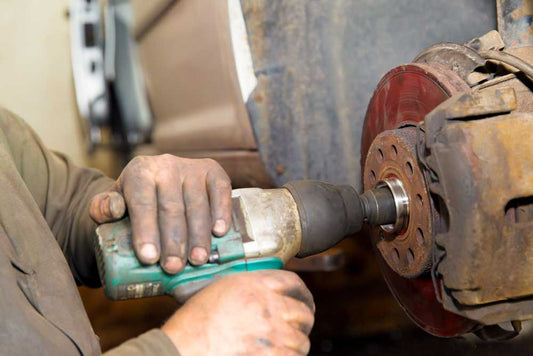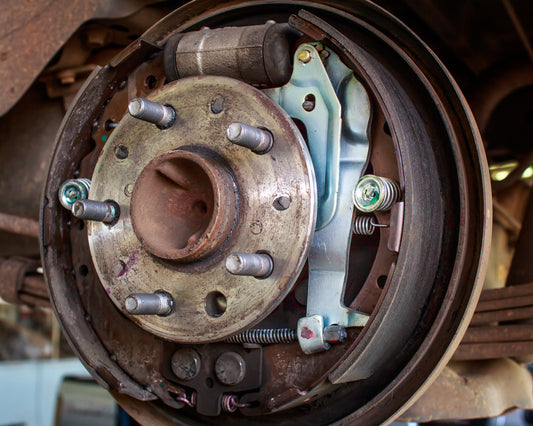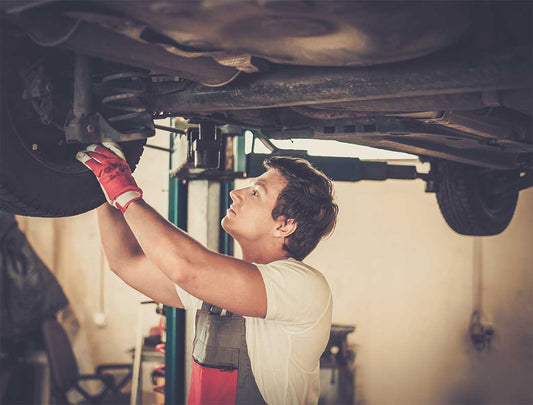Many people believe that disc brake rotors can warp during normal service. Tales sometimes, even told by OE Dealerships, will state that you should not apply your brakes. They will also tell you not to drive through a deep puddle when it's raining because if the rotor is hot from hard application and then gets drenched, it will warp. One national brake trainer's daughter was actually told this when she brought her new, under warranty, vehicle in because of a pedal pulsation problem.
ROTORS DON'T WARP or at least they don't under any type of vehicle operation that would enable the vehicle to be safely driven.
What does happen is that rotors will have excessive run out or wobble because they are not operating a right angle in relationship to the hub face. What this means is that every time a portion of the rotor comes around the rotor makes some contact with the pads and wears the rotor thickness away at that point. After this happens for a while and the brakes are applied you feel a pedal pulsation as the pads follow the rotor thickness variation. The pads move in and out causing the pedal pulsation. Changing the rotor with a new one only delays the reoccurrence of the problem. Replacing rotors isn't solving the problem.
 Basics of Rotor Run Out 01
Basics of Rotor Run Out 01When you apply the brakes you may sometimes feel a pedal pulsation. This condition may be felt under light, medium or hard braking or any one of them. It's not when the pulsation is felt that is important, it's the fact that it is present at all.
 Basics of Rotor Run Out 02
Basics of Rotor Run Out 02Sometimes the condition that causes the pedal pulsation, rotor run out, is so severe that you can actually see a portion of the rotor that has been rubbing the pads. Note the rather large area on this rotor that is shinny. This is the spot that is high and rubs the pads when the rotor rotates.
 Basics of Rotor Run Out 03
Basics of Rotor Run Out 03There are specifications published that identify the allowable amount of rotor run out but any run out that causes a pedal pulsation condition is excessive.
 Basics of Rotor Run Out 04
Basics of Rotor Run Out 04The start of the process to identify the cause of the run out condition is mark one stud and the rotor hole that goes over that stud. This is done so you can place the rotor back on the hub in the same place after it is removed for rotor hat inspection reasons.
 Basics of Rotor Run Out 05
Basics of Rotor Run Out 05After removing the tire/wheel and marking a reference stud location next install washers or special pre-load load distribution cones as shown, then torque down the lug nuts to seat the rotor against the hub face. Nest set up a dial indicator as shown and rotate the rotor one full turn. Note the amount of run out shown on the dial indicator. Compare this reading against the specifications published.
 Basics of Rotor Run Out 06
Basics of Rotor Run Out 06This is a close up of the special pre-load spacer. Note the cone shape which accepts the tapered lug nut and the flat outer shoulder that is placed against the outer surface of the rotor hat. Failure to use these spacers or at least large flat washers will lead to improper rotor pre-loading and inaccurate rotor run out measurements.
 Basics of Rotor Run Out 07
Basics of Rotor Run Out 07As part of the identification process of the overall condition of the rotor you should also take thickness measurements in 8 places around the rotor. This established "thickness variation" reference readings that are compared against the specifications published in the brake spec book. If you have rotor run out you usually will also have thickness variation at least in one spot on the rotor.
 Basics of Rotor Run Out 08
Basics of Rotor Run Out 08After you have obtained your run out and thickness specification readings remove the rotor and check the inside of the rotor hat. Rust and scale can easily build up at this location and be the cause of the run out error and accompanying pedal pulsation.
 Basics of Rotor Run Out 09
Basics of Rotor Run Out 09The hub face must also be clean of rust and scale. Use a tool such as the one shown to clean the hub face. Don't use anything that will remove metal or you may create a condition where you have a rotor run out.
 Basics of Rotor Run Out 10
Basics of Rotor Run Out 10Many technicians along with others recommend applying some grease or anti-size to the hub face to help prevent future rust and scale build up. Some OE manufactures do and have used a lubricant at this location for years while others do not.
 Basics of Rotor Run Out 11
Basics of Rotor Run Out 11It's a good idea to also clean the outer surface of the rotor hat but remember don't use anything that will remove metal or you are creating a condition where the wheels clamping force may cause a rotor parallelism or run out condition when the wheel is torqued down to specifications.

The cause of pedal pulsation shouldn't be a mystery. In addition to checking the rotor run out and rotor thickness variation it is also recommended that you set up your dial indicator and take run out of the hub face. This is easier said than done as the studs make setting up the dial indicator to take a hub run out reading all but impossible.
Hub face run out can be the root cause but the most common condition causing the problem is rust and scale between the hub face and the inside of the rotor hat.
This concludes our Tech Tricks Tuesday Blog Post on the Basics of Rotor Run-out and we hope that you found it useful. If you have any comments, please let us know.




